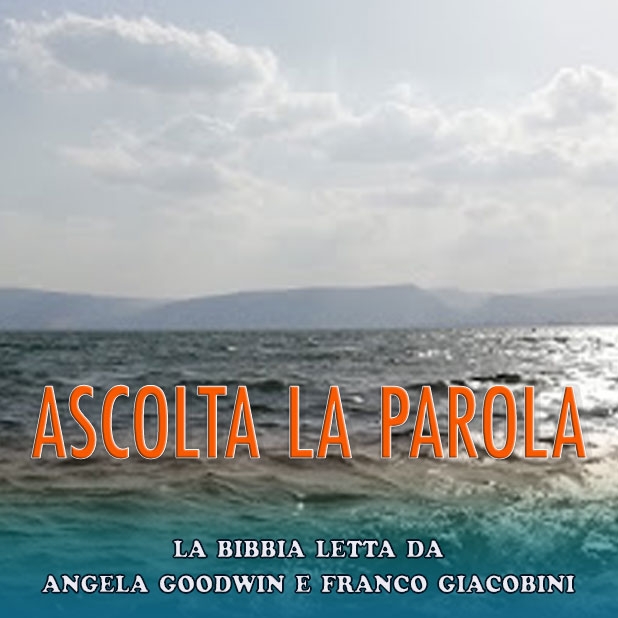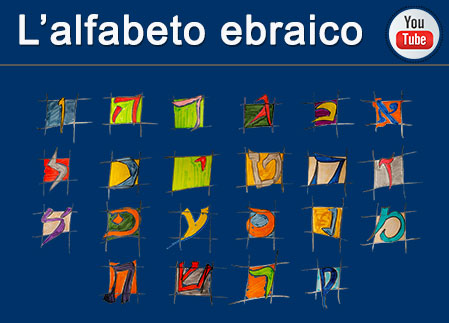Turcotte, Jean-Claude
Canada 13/10/2005
Shalom aleichem! These two words with which I address you—and which I am undoubtedly not pronouncing quite perfectly—were also used by Pope Benedict XVI last August, during his visit to the synagogue of Cologne. I wish to make those words my own. I make them my own, after having prayed with you today on the occasion of Yom Kippur—a powerful moment for me, which I am experiencing for the first time and which, to the best of my knowledge, has never been experienced by any of the other bishops of Montréal.As I came here to pray with you, my thoughts turned spontaneously to Jesus, who regularly went to the synagogue, and who taught there . I also thought of Pope John Paul II who, on March 25, 2000, went to the Wailing Wall in Jerusalem, to place a piece of paper there, upon which was written a request for forgiveness for the faults of the Church committed against the Jews during the last 2000 years.
Shalom aleichem! I speak these words, not merely as a wish that you may live in peace, but also in the hope of seeing peace established more and more deeply between Jews and Catholics.
Forty years ago, you would not have invited the bishop of Montréal to an event like this one today, and, even if you had invited him, he would not have been able to reply affirmatively to your invitation. But forty years have passed and, forty years ago, on October 28, 1965, the declaration Nostra Ætate was promulgated in Rome by Pope Paul VI. I would like to thank you for inviting me to speak to you about this document, which changed the Church’s view, and transformed the Church’s behaviour, toward you. As a profoundly innovative document, it marked a turning-point in the history of the Church to which I belong.
The initiative for this document goes back to Pope John XXIII. In the midst of what was taking place at Vatican II, it seemed normal and necessary to him to take a step forward in terms of improving relations between Jews and Catholics. He imagined that the adoption of a text of this sort could be achieved fairly easily and without too much turmoil … but that was not to be the case.
Because of the importance of this subject, the progressive wing of the Council hoped that a document would be prepared focussing only on Judaism. But some of the Council fathers opposed this, so much so that, in order to find common ground, it was necessary to insert the text on Judaism within a broader document, Nostra Ætate, which deals with the Catholic Church’s relationship to all non-Christian religions. As the moment of the vote neared (a point at which normally only minor changes could be proposed), a violent press campaign, as well as pressure brought to bear by various traditionalist and anti-Semitic groups, led to a number of substantial changes being made . The essence of the document, however, was preserved.
What Nostra Ætate says concerning the Jewish religion is sketched out in eight sections or paragraphs. I will just briefly review its contents:
The first section affirms that, reflecting on its own mystery, the Church discovers that a “bond … spiritually links the people of the New Covenant … with the descendants of Abraham” . In other words, “the mystery of Israel is part of the identity of the Church itself” . In 1983, Pope John Paul II would further develop this statement, when he said that “our two religious communities are linked together at the level of their very identities” .
The second section emphasizes that “the Church of Christ recognizes that the beginnings of its faith and election are to be found … among the patriarchs, Moses and the prophets” . It adds that the Church confesses that its salvation “is mystically prefigured in the Exodus of the Chosen People from the land of slavery,” and that, according to the teaching of the Apostle Paul, “is nourished from the root of the good olive tree, onto which the branches of the wild olive tree of the Gentiles have been grafted” . As Catholics, we are particularly aware that the Catholic Church is nourished from the root of the good olive tree, when we celebrate our liturgies, which are steeped in the Psalms, and in texts drawn from those books which we call the First Testament.
The third section recalls that “the apostles, the foundations and pillars of the Church, were born out of the Jewish people, as were many of those first disciples who proclaimed the gospel of Christ to the world” .
The fourth section begins by a number of affirmations that were not in the original text. It affirms that “for the most part the Jews did not accept the gospel, indeed many of them opposed its dissemination. Nevertheless, according to the apostle [Paul], because of their ancestors the Jews still remain very dear to God, whose gift and call are without regret” . It concludes with a vision of the future: “Together with the prophets and the same apostle, the Church awaits the day … on which all peoples will call upon the Lord with one voice and ‘will serve him with one arm’ (Zp 3,9)” . In the years that followed the promulgation of Nostra Ætate, Catholic theologians explained more precisely that, contrary to what had been taught previously, the Jewish people were never stripped of their chosenness, and that the First Covenant had not been invalidated by the New: “Indeed, [the First Covenant] is the root and the source, the foundation and the promise [of the New Covenant]”; so says a text of the French bishops’ conference issued in 1973 .
In the following (fifth) section, the Council invites Christians and Jews to an improved “mutual knowledge and esteem” which, as the text says, will be born “from Biblical and theological studies, and from friendly dialogue” .
The sixth point is particularly important when we realize that, down through the centuries, the Jews have been accused of being guilty of deicide: “those things which were perpetrated during [Christ’s] passion cannot be ascribed indiscriminately to all the Jews living at the time, nor to the Jews of today” . And the document adds, in its eighth point that it is “because of the sins of all people” that Christ “went willingly … to his Passion and death” .
In section seven, the Church “deplores feelings of hatred, persecutions and demonstrations of anti-Semitism directed against the Jews, at whatever time and by whomsoever” . Pope John Paul II highlighted the seriousness and importance of this text in the prayer for forgiveness that he spoke in the name of the whole Church on March 12, 2000: “God of our fathers, you chose Abraham and his descendants to bring your name to the nations: We are deeply saddened by the behaviour of those who in the course of history have caused these children of yours to suffer, and, asking your forgiveness, we wish to commit ourselves to genuine brotherhood with the People of the Covenant” . In order to appreciate the importance and scope of the work that was accomplished at Vatican II, I think it is worthwhile to quote what was written on the day after the vote, by the French journalist Henri Fesquet, who was the special Conciliar correspondent of the [Paris] newspaper Le Monde: “The vote on the declaration on the Jews puts a final stop to the incredible amount of pressure and manoeuvering with which the Secretariat for [Christian] Unity has been assaulted for more than three years. When these various attempts to abort the conciliar declaration, or to minimize its significance, finally come to light, people will be stunned by the passions, the aberrant behaviour, the hatred and, to be quite frank, the ignorance and the stupidity [involved] … But it is important to recognize that the declaration, as it was voted on, preserved its essence … By its severe condemnation of anti-Semitism, Vatican II has achieved, broadly speaking, the wishes of John XXIII. The Church has implicitly acknowledged its own past failings in this matter, which are indeed a heavy burden, lasting and numerous. The new ecumenical mentality has overcome the prejudices of the past. In this sense, the vote … opens a new page in the history of the relationship between Rome and the Jews” .
My dear friends—permit me to call you my friends—you know as well as I do that the declaration Nostra Ætate did not bring about a final resolution to the hatred, quarrels, lack of understanding and injustices that have separated us. But it opened a window, and offered us the hope of rapprochement and reconciliation. As I thank you for welcoming me today, I hope for the establishment and the deepening of the bonds that should normally exist between believers who profess faith in the same God—the God of Abraham, Isaac and Jacob—the God to whom Jesus prayed, whom he called “Father,” and to whom he gave thanks. I also hope that there will be a greater and greater solidarity between us, which will allows us to work together in promoting and defending human rights, human life and justice.
For a long time, we had forgotten, and now we are rediscovering once more, that what unites us is more important and more substantial that what has divided us, and what divides us still. And so today, truthfully and with joy, we can wish each other peace as our common ancestors once did. And so I say to you once more: Shalom aleichem!
© 2006 International Council of Christians and Jews
[Courtesy of Fr. Murray Watson - Centre for Catholic-Jewish Learning at the King's University College, Canada]
(i) “Peace be with you!”
(ii) Luke 4:18; John 6:59; Mark 1:21; 6:2; Matthew 4:23; 9:35; 13:54; Luke 13:10.
(iii) See Mystère de l’Église, mystère d’Israël (II, p. 1), translated from materials written by Father Louis Derousseaux, professor emeritus of theology at the Catholic University of Lille, http://www.ebior.org/Encyc/Juif-Chretien/MYSTERE2-Eglise.htm.
(iv) Nostra Ætate, #4.
(v) Mystère de l’Église, mystère d’Israël (II, p. 1).
(vi) Documentation catholique 1982, p. 339
(vii) Nostra Ætate, ibid.
(viii) Nostra Ætate, ibid.
(ix) Nostra Ætate, ibid.; see Romans 11:17-24
(x) Nostra Ætate, ibid.
(xi) Nostra Ætate, ibid., p. 2.
(xii) Nostra Ætate, ibid.
(xiii) Cf. Mystère de l’Église, mystère d’Israël, p. 3
(xiv) Nostra Ætate, #4.
(xv) Nostra Ætate, ibid.
(xvi) Nostra Ætate, ibid.
(xvii) Nostra Ætate, ibid.
(xviii) Documentation catholique, April 2, 2000, #2223, p. 331.
(xix) Le journal du concile by Henri Fesquet, special correspondent for Le Monde, published by Robert Morel, 1966, pp. 987-988 ; original text : « Le vote de la déclaration sur les juifs met un point final au nombre incroyable de pressions, démarches assailli le secrétariat pour l’unité depuis plus de trois ans. Lorsque seront connues dans le détail ces diverses tentatives pour faire avorter ou rendre insignifiante la déclaration conciliaire, on restera confondu devant tant de passion, d’aberration, de haine et, pour tout dire, d’ignorance et de bêtise. […]Mais il convient de reconnaître que la déclaration, telle qu’elle a été votée, a sauvé l’essentiel. […] Vatican II a réalisé grosso modo la volonté de Jean XXIII en blâmant sévèrement l’antisémitisme. L’Église a reconnu implicitement ses fautes passées en la matière, qui sont lourdes, durables et nombreuses. La nouvelle mentalité œcuménique a vaincu les préjugés d’antan. À cet égard, le vote […] inaugure une page blanche dans l’histoire des rapports entre Rome et les juifs »
556 visualizzazioni.
Inserito 01/01/1970
Relazioni Ebraico-Cristiane
Ultime novità nel sito
- 19/04/2020: Articolo - L’enigma della Maddalena
- 23/02/2020: Articolo - Il locus amoenus nelle catacombe ebraiche e cristiane di Roma
- 16/02/2020: Articolo - Il profetismo nel Vicino Oriente antico
- 13/02/2020: Articolo - I Profeti della Cappella Sistina
- 09/02/2020: Articolo - Gerusalemme e la Terra Santa di Israele


